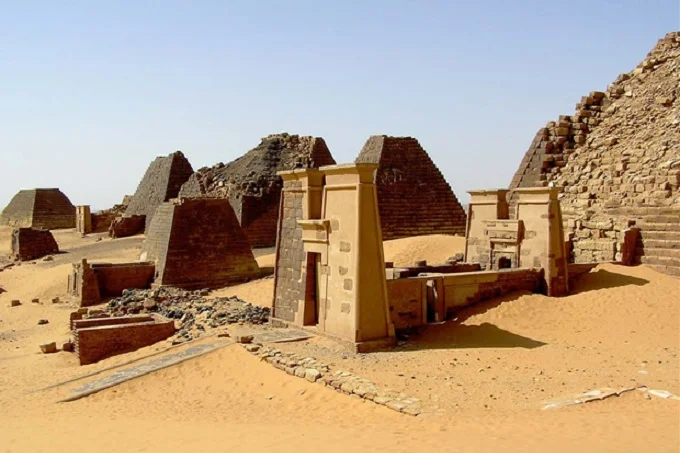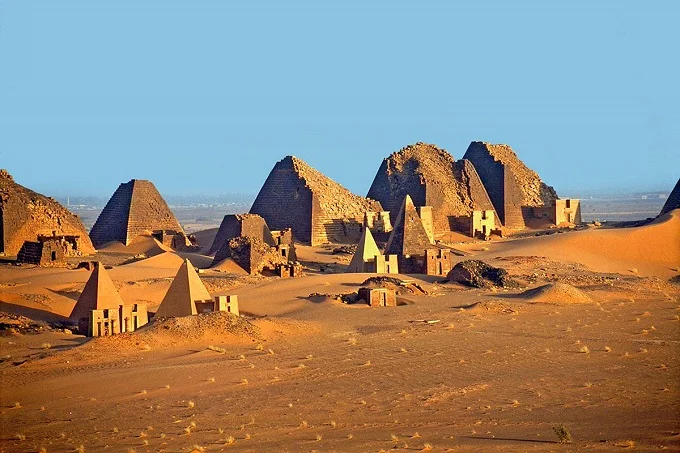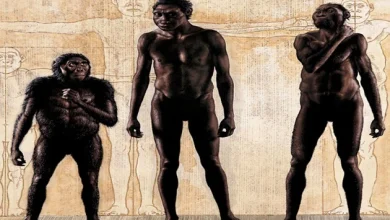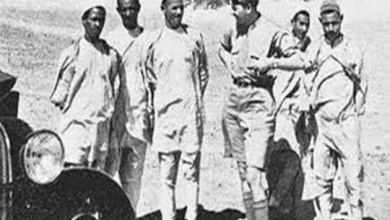Great ancient African civilizations

A great number of myths have been perpetuated about the way of life in Africa before the arrival of Europeans and Americans on the continent. Some historians have the view that Africans were little more than barbarians whose main contribution to the world was the practice of agriculture and the ownership of slaves. This is not the case at all. Only Egypt is respected when historians write history, despite the fact that ancient African history is equally as intriguing, complicated, and advanced as any other ancient civilization. Almost without exception. Because of this mentality, historians from Europe and the United States have long held the belief that Africa and the people who lived in Africa did not have their own culture or history apart from what was given to them by external factors.
However, long before Europeans began colonizing Africa, the indigenous African people had already constructed kingdoms and monuments that were on par with those of any European ruler. Despite this, a significant portion of the history of black people in Africa has been falsified and neglected due to racial prejudice in order to provide an excuse for the slavery of millions of people for the sake of monetary gain. The ancient African kingdoms of Meroe, Ghana, and Swahili will be the focus of discussion, as will those nations’ significant contributions to the annals of history.
Around the year 1000 BC, Nubian monarchs established a politically autonomous state that the Egyptians referred to as Kush. This was the beginning of the kingdom of Meroe. At some point in the distant past, the kings of Kush relocated to Nubia, where they founded the kingdom of Meroe. Around the year 300 BC, these monarchs chose to make Meroe their capital city. The kingdom continued to thrive in that location for more than nine centuries.
On the other hand, there are historians who believe that the Meroitic people did not contribute any of their own unique culture to the annals of history since their civilization so closely mirrored that of the Egyptians. This is not the case at all. According to archaeological evidence that is over 2,500 years old and was discovered in North Sudan, there was an ancient civilization along the Nile River in lower and Upper Nubia (modern-day Sudan) that was older than the civilizations that were found in the North. This civilization can be found in modern-day Sudan (Egypt). In addition to this, there is evidence that demonstrates that the well-known Old Egyptian Civilization was actually an advanced stage of an even more ancient civilization that was situated in the Sudan.

The existence of these artifacts demonstrates that the civilization and history of Meroe existed far earlier than that of the Egyptians. In every other respect, Egypt was an exact replica of Meroe. Additionally, this kingdom had its own unique language. However, the vast majority of historians believe that the Egyptians were responsible for the development of both their language and their alphabet. It was a widely held idea for a long time that ancient Black Africans were unable to establish a written language and thus never did. In spite of this, inscriptions written in a different native alphabet may be found in Mero as early as the second century BC, demonstrating that these beliefs are not accurate.
This written form of the Meroitic language remained in use until the 5th century when the Old Nubian language subsequently replaced it. There is evidence that a sizeable portion of the population was able to read Meroitic since the language was used extensively on monuments. However, the meanings of these writings are still a mystery since the hieroglyphic-derived alphabet used to write them is not now capable of being translated.
Another feature about the Meroits that is not well known is that they possessed an abnormally high number of queens who governed their realms independently of male influence. In the year 24 BC, one queen named Amanirenus was in charge of leading her army against an attack by the Romans. She prevailed in the first fight, and despite their success in the second battle, the Romans eventually gave up, reached an agreement for a cease-fire, and returned to Rome. Rome was never able to subjugate Mero, and as a result, this kingdom maintained its power and prosperity for another 200 years. In point of fact, the term “queendom” would be more appropriate given that the monarch of Mero was traditionally a female warrior and was referred to as a “kandake,” which translates to “queen mother,” or more simply as “gore,” which means “ruler”.
Meroe was well-known for its vast iron production, which was the first industry of its sort to be developed on a big scale in the Nile Valley. Additionally, Mero engaged in considerable commerce with both Greece and Rome. The creation of iron resulted in the improvement of a variety of tools, including those used by armies in combat and by farmers to cultivate their lands, such as axes and hoes. Soon after, Meroit merchants got direct access to the growing commerce of the Red Sea by exporting gold, ivory, leopard skins, ostrich feathers, and ebony. Meroit traders also traded ostrich feathers.
After some time, the kingdom of Meroe fell into a state of decay. The reasons for the fall of the Meroitic Kingdom are still, for the most part, a mystery. The development of Axum, a strong Abyssinian state in modern-day Ethiopia to the east, presented the Meroitic kingdom with a difficult challenge as it sought to expand its territory. Around the year 350 AD, an Axumite army overran and destroyed Meroe city, bringing an end to the autonomous existence of the Meroe monarchy.

The history of the West African Empire of Ghana is another example of a kingdom whose significance was minimized and instead ascribed to external influences. Despite the fact that the Berbers were the ones who first established Ghana in the fifth century, the country’s capital is located on the Berber population’s southernmost boundary. The Soninke, a Mande-speaking tribe who resided in the area bordering the Sahara Desert, eventually came to control the territory and make it their home. They erected their capital city, Kumbi Saleh, right on the border of the Sahara, and the city swiftly became the heart of the Trans-Saharan trade routes.
Ghana developed considerable riches due to the Trans-Saharan trading routes. These riches enabled Ghana to conquer local chieftaincies and exact tribute from the nations that it subsequently subdued. This tribute, on the other hand, was little in comparison to the riches created by the trade of products that traveled from western Africa to Egypt and the Middle East on the eastern side. Gold, salt, and copper were the primary commodities engaged in this trade.
Ghana was controlled by a monarch who held his throne by hereditary succession. The kingdom was matrilineal, as were other Sahelian dynasties that were to follow in its footsteps; the king’s sister was responsible for providing the successor to the throne. It would indicate that the monarch held the position of top judge inside the realm in addition to his military authority.
The kingdom of Ghana never converted to Islam, despite the fact that Islam had been the dominant religion in most of northern Africa ever since the seventh century. The court in Ghana, on the other hand, permitted Muslims to live in the cities and even welcomed Muslim experts to assist the royal court in the administration of government and provide advise on legal concerns.
The nation of Ghana was finally brought to its knees by the people who established it in the first place. In contrast to the Ghanaians, the Berbers, who were now calling themselves Almoravids, enthusiastically converted to Islam and, in the year 1075, started a holy war, sometimes known as jihad, against the Ghanaian kingdom. After the year 1100, Ghana ceased to be either a commercial or military power, but nothing is known about the specific events that led to this change. The rule of Ghana was brought to an end as a result of the Almoravid revolt.
The history of the Swahili kingdom has been presented by both Europeans and Arabs as one of Muslim and Arab dominance, with the African population and its rulers playing a passive part in the process. This portrayal is common on both sides.
Recent discoveries of archaeological evidence suggest, on the other hand, that the people who speak Swahili are descended from Bantu-speaking people who first lived along the East African coast in the first millennium. Despite the fact that members of other cultures, such as Arabians and Persians, intermarried with Swahili people, none of these civilizations had a role in the development of Swahili civilization. These societies eventually got integrated into an existing thriving African civilization that had been established by ancient Bantu Africans.
Around the end of the first millennium AD, there was a significant shift that took place along the eastern coast of Africa. People speaking Bantu moved out of the interior of Africa during this period and settled along the coast all the way from Kenya to South Africa. Next, merchants and traders from the Muslim world began to settle there after realizing the strategic importance of the east coast of Africa for commercial traffic. Marriages between Bantu women and men from the Middle East resulted in creating and consolidating a prosperous Swahili culture. This culture incorporated elements of religion, agricultural architecture, textiles, food, and purchasing power.
Beginning around the year 900 AD, the eastern coast of Africa experienced a migration of Shirazi Arabs from the Persian Gulf, as well as the establishment of a few small Indian settlements. The Arabs referred to this area as al-Zanj, which translates to “The Blacks.” Over time, Muslim merchants from Arabia and Persia gradually gained control of the coastal areas. By the 1300s, all of the major east African ports, from Mombaza in the North to Sofala in the south, had completely converted to Islam and developed into cultural hubs of the religion.
A lingua franca is a secondary language that is a combination of two or more languages. The language that grew out of this civilization is one of the most common and widespread of the lingua francas. Kiswahili and Swahili are two forms of the same language. Both are derived from the Arabic term sawahil, which means “coast.” The Bantu languages spoken along the northeastern coast are divided into many subgroups. Swahili is a member of the Sabaki category. Pokomo and Ngazija, both of which belong to the Miji Kenda language family, are their near relatives.
Over the course of at least a thousand years of intensive and varied connection with the Middle East, Swahili has received a rich influx of loanwords from a broad variety of languages, which has resulted in a richer and more diverse vocabulary. The Bantu origin of the Swahili language cannot be denied despite the significant number of Arabic loanwords that have been incorporated into the language.
The Swahili culture spread farther south till it reached the city of Kilwa on the island of Zanzibar (from the Arabic word al-Zan). Later, the people who lived there established a tiny area around Sofala in Zimbabwe, which was located even farther south (Horton & Middleton, p. 140). While the northern towns continued to be limited and had little impact on the culture of Africa farther inland from the coast, the Sofalans aggressively traveled interior and propagated Islam and Islamic culture deep inside African territory.
Mogadishu, Barawa, Mombasa (Kenya), Gedi, Pate, Malindi, Zanzibar, Kilwa, and Sofala were among the most important Swahili city-states. Sofala was located in the extreme south (Horton & Middleton, p. 155). Kilwa was the most well-known of these city-states and was especially prosperous as a result of its control over the southern port of Sofala. This port had access to the gold that was produced in the interior (near “Great Zimbabwe”), and its location as the most southern point at which ships from India could hope to sail and return in a single monsoon season contributed to Kilwa’s advantageous position.
These city-states were very cosmopolitan for their historical period, yet at the same time, they maintained their political autonomy from one another. In point of fact, they were more comparable to rival businesses or corporations, each of which was striving for a greater portion of the African market. Ivory, sandalwood, ebony, and gold were the primary types of goods exported. Arab traders brought with them a variety of goods, including textiles from India and porcelain from China. Despite the fact that Arabs and Persians were influential in the development of the Swahili civilization, the African aristocracy was responsible for the administration of the city-states. On the other hand, the aristocracy was comprised of Muslims, and it was the Muslims who held control of the money. Commoners and resident foreigners made up a significant portion of the population of the country, and they were classified below the aristocracy in the social hierarchy.
On the other hand, Islam itself had very little success in penetrating the interior among the pastoralists, hunters, and farmers. Even the coastal areas that were closest to the trading towns remained relatively untouched by the disaster. In the cities, the homes of the non-Muslim ordinary people were made of mud and thatch, while the homes of the Muslim elite were made of stone and coral, and it seems that the majority of individuals who practiced Islam were affluent rather than impoverished.
Despite this, the Swahili people eventually established a culture that combined aspects of their African and Islamic heritage. For example, family lineage was tracked both via the maternal line, which was an African custom and practice and through the paternal line, which was the Muslim tradition. The maternal line was responsible for controlling property. The culture of the Swahili people was heavily influenced by Islam but still maintained many of its African roots.
In the sixteenth century, these city-states started to fall into disrepair because of the introduction of Portuguese commerce, which interrupted the traditional trade routes and rendered the Swahili commercial hubs obsolete. Conquering the Islamic city-states that were located along Africa’s eastern coast was a high priority for the Portuguese because they did not want indigenous Africans to have any say in African commerce. Late in the seventeenth century, the religious leader of Oman, known as the imam, pushed the Portuguese off the coast and eventually cemented his rule over the area.
The presence of these ancient Black African civilizations provides irrefutable evidence that Africa had a culture and history distinct from that of Egypt, which persisted for decades before the influence of outside causes. The kingdom of Mero governed for centuries before the Egyptians, and as a result, it has earned its position as one of the most important ancient civilizations in the history of the globe.
The example set by the kingdom of Ghana demonstrated that Africans were capable of running their own governments and economies without the assistance of Europeans. The Swahili people and their language had been existing for millennia before they were considered to be “discovered” by Arabians and other people.
The majority of the world knows very little about these ancient civilizations, despite the fact that they existed in Africa long before Europeans and Muslims brought with them their own distinct cultures, languages, and commercial systems. This is a serious offense against the field of historical research, and we can only hope that, with the help of additional archaeological research and written documentation, the complex and fascinating history of these magnificent civilizations will one day be preserved for the enjoyment of future generations.




